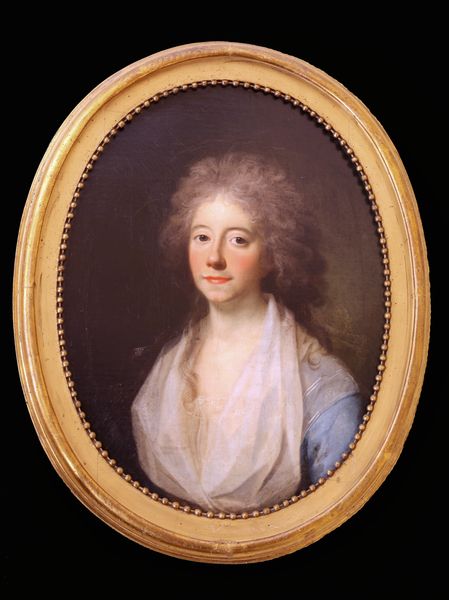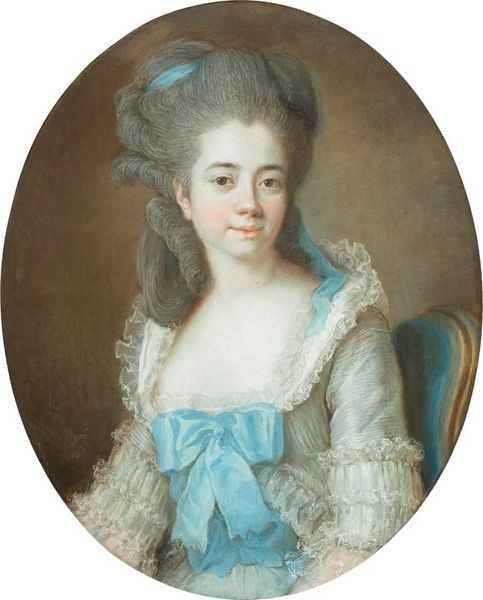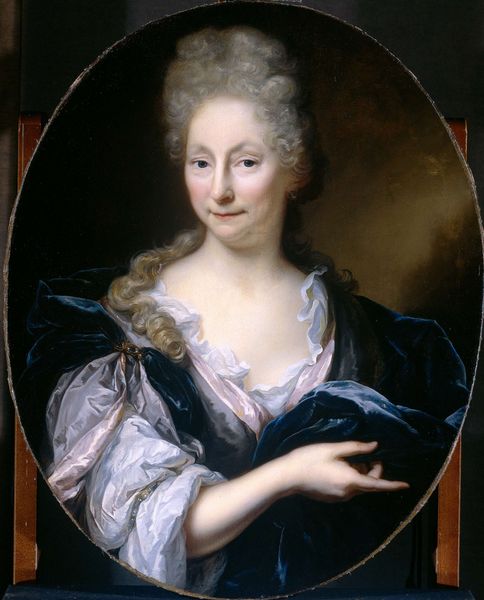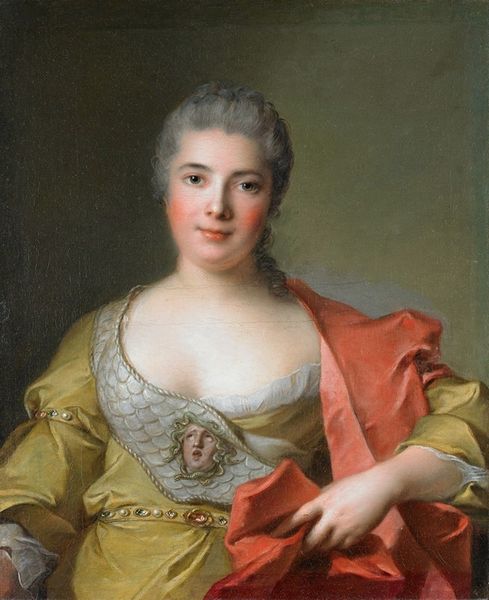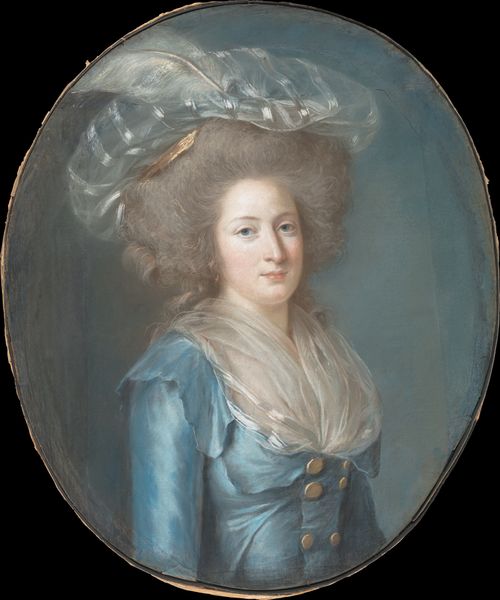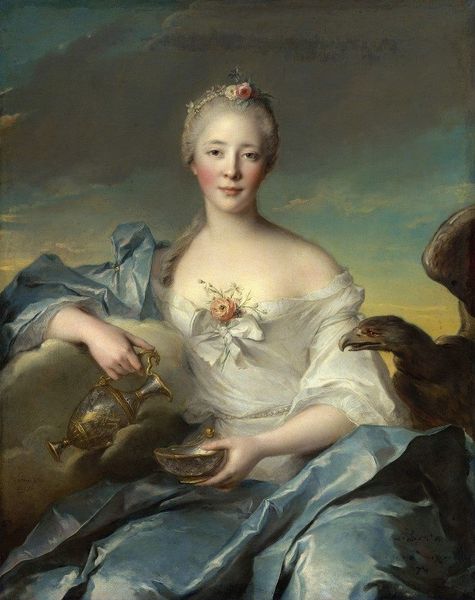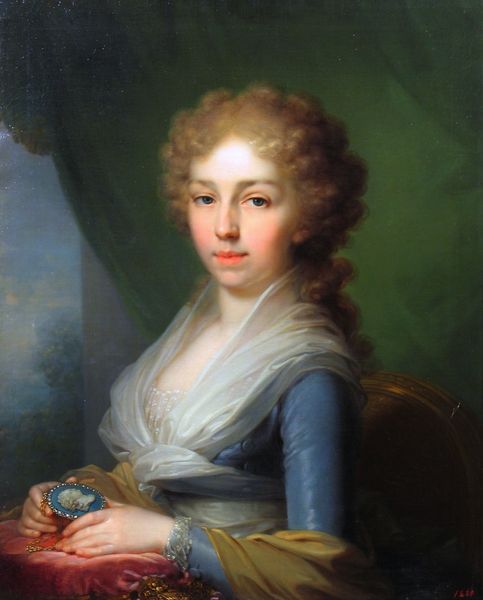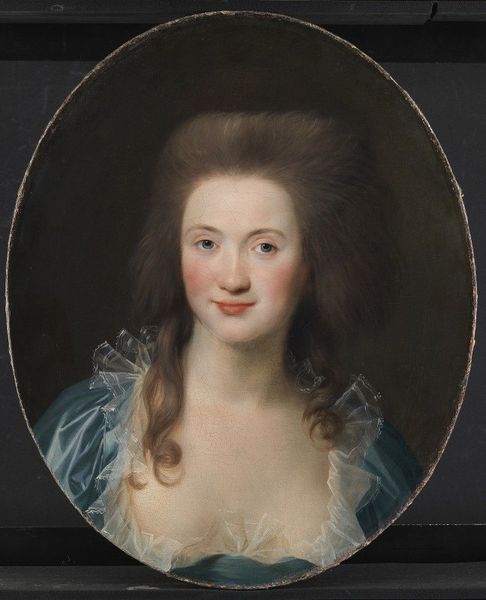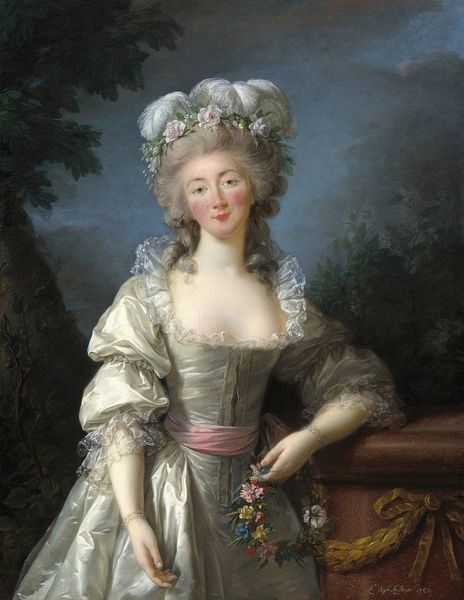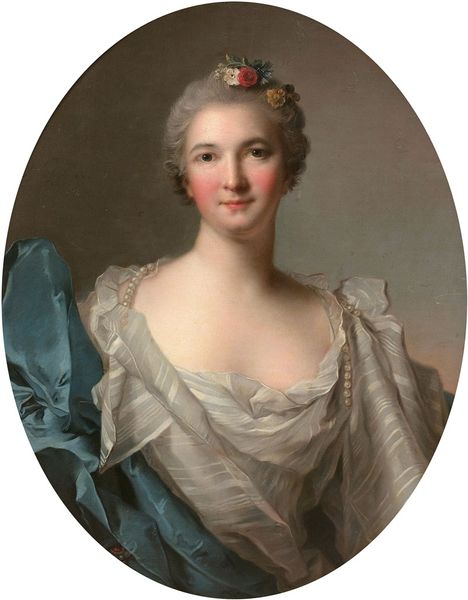
Copyright: Public domain
Curator: Here we have Dmitry Levitzky's "Portrait of Countess Ursula Mniszek," completed in 1782. Editor: My first impression is of lightness and almost an ethereal quality, wouldn't you agree? The colour palette is restrained, delicate. Curator: Absolutely. Levitzky was a master of capturing the spirit of the Enlightenment in his portraits, and this work exemplifies that. He presents the Countess not just as a noblewoman but as an individual embodying grace and intellect, reflecting larger societal shifts towards valuing personal virtue and education. Editor: I'm intrigued by the texture he achieves with oil paint. Note how he suggests the delicate lace trimming the Countess's gown or the lustrous quality of the satin. Curator: Costume is crucial here, not just for depicting her aristocratic status, but as a language that communicates wealth and aesthetic. However, there's more than just superficial beauty at play; consider the historical and socio-political context. Catherine II's court was deeply invested in projecting an image of cultivated sophistication, eager to appear on par with Western European courts. Levitzky's paintings supported this effort. Editor: True. The oval format is so perfectly contained—every detail, meticulously rendered. Her powdered hair, rising like a soft cloud…It creates an engaging study of form. Curator: Though the court fostered the arts, a woman’s role in Russian society remained firmly bounded. These portraits, while celebrating individuals, also remind us that the sitter's power rested on inheritance and privilege, a system benefiting some but excluding many others from meaningful participation. Her agency was limited by her class and gender, something not fully conveyed in most art historical approaches. Editor: Indeed. We both have appreciated different perspectives of this portrait! Curator: Exactly. Let's remember art's interplay within the broader social landscape; together we understand it better.
Comments
No comments
Be the first to comment and join the conversation on the ultimate creative platform.
